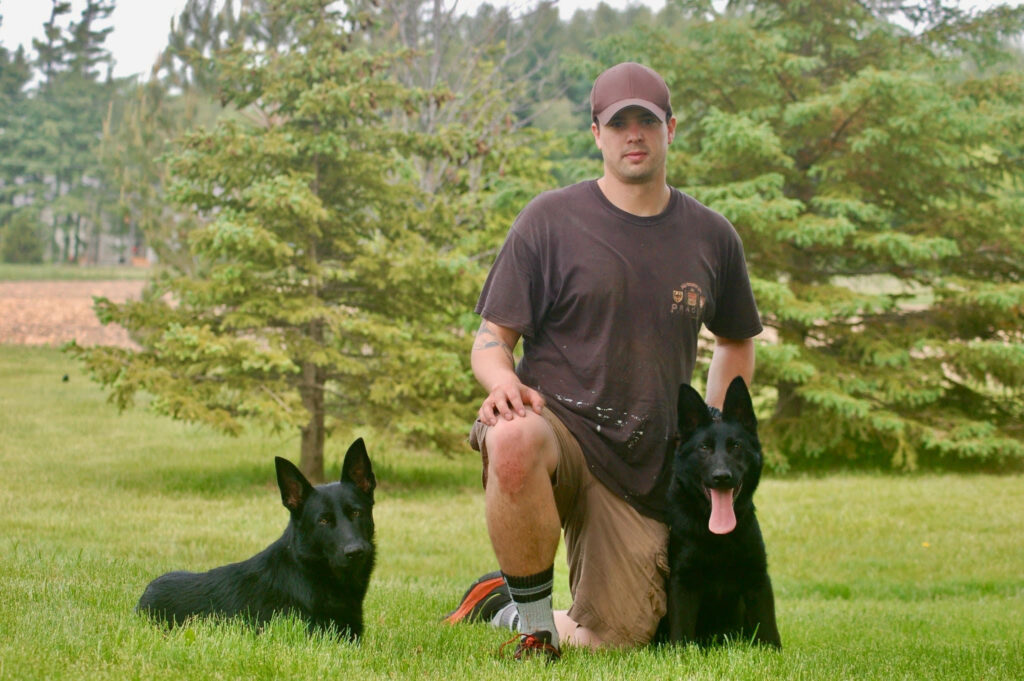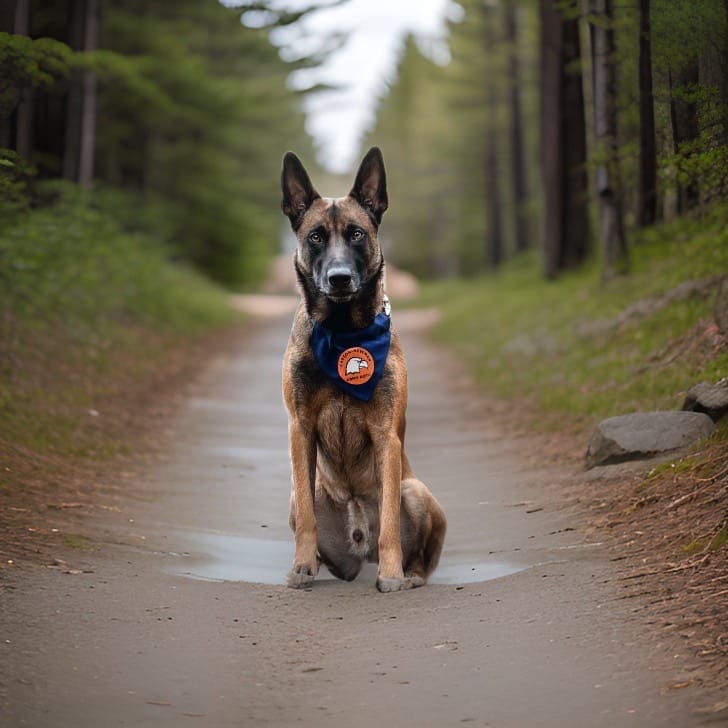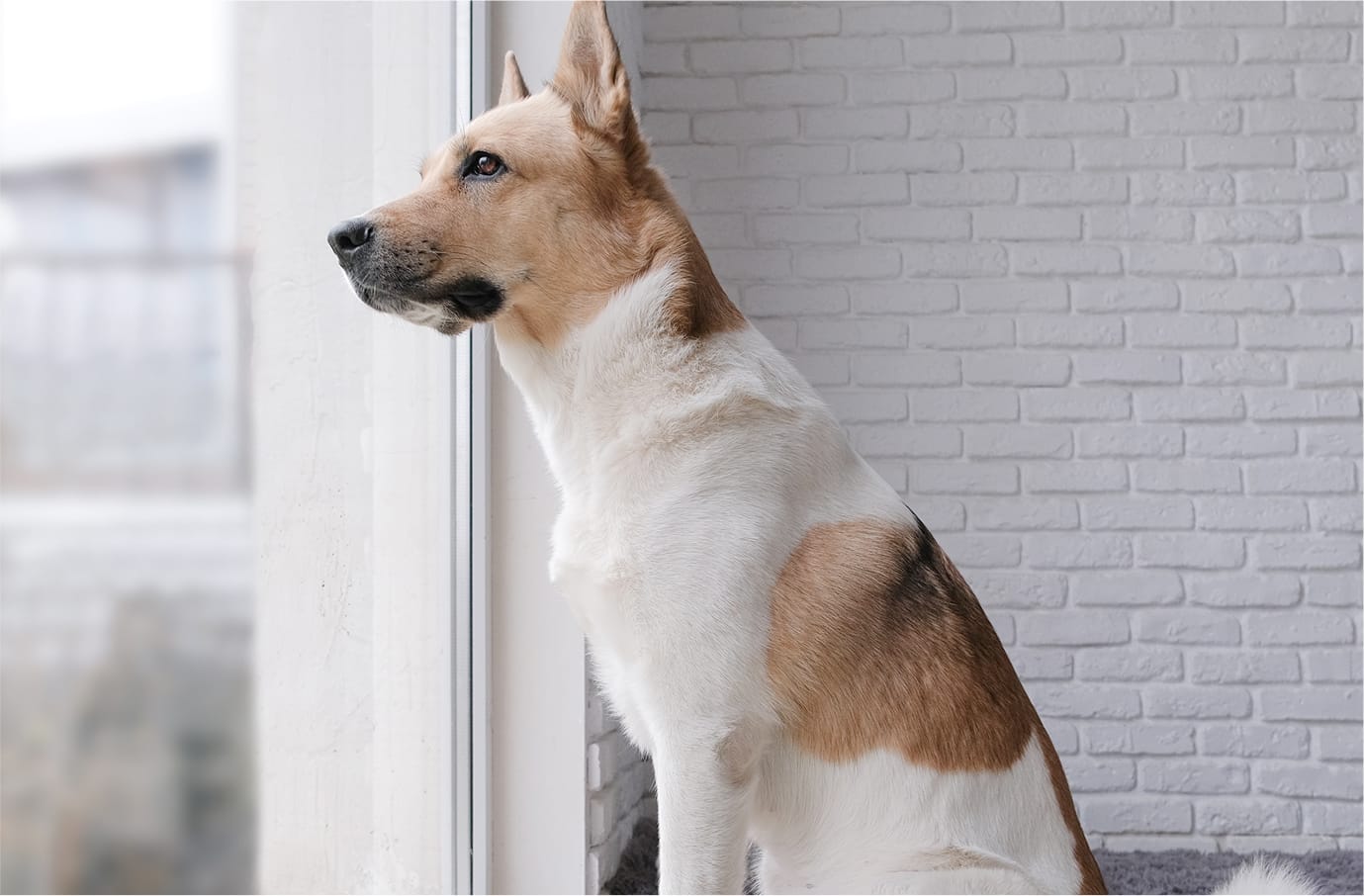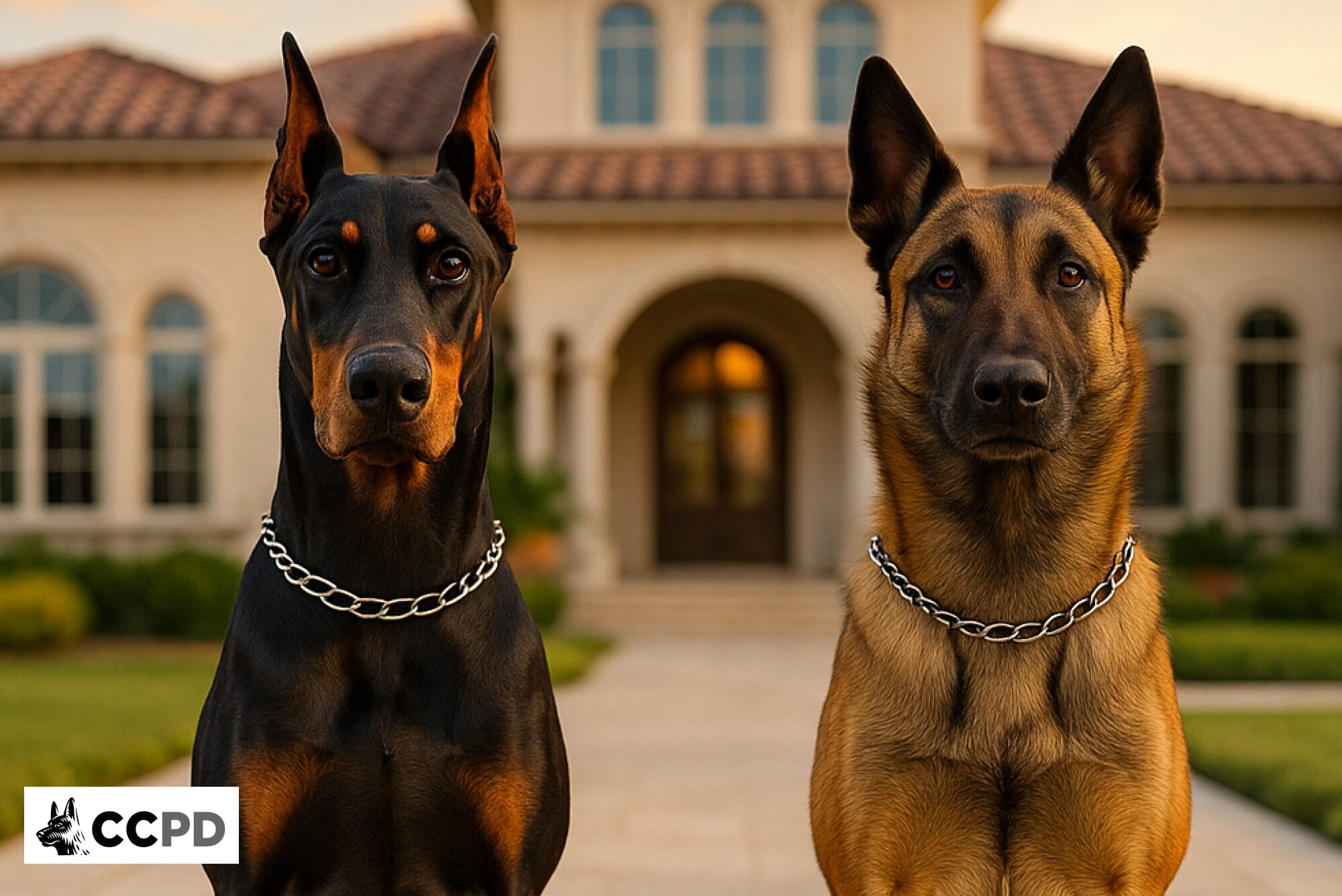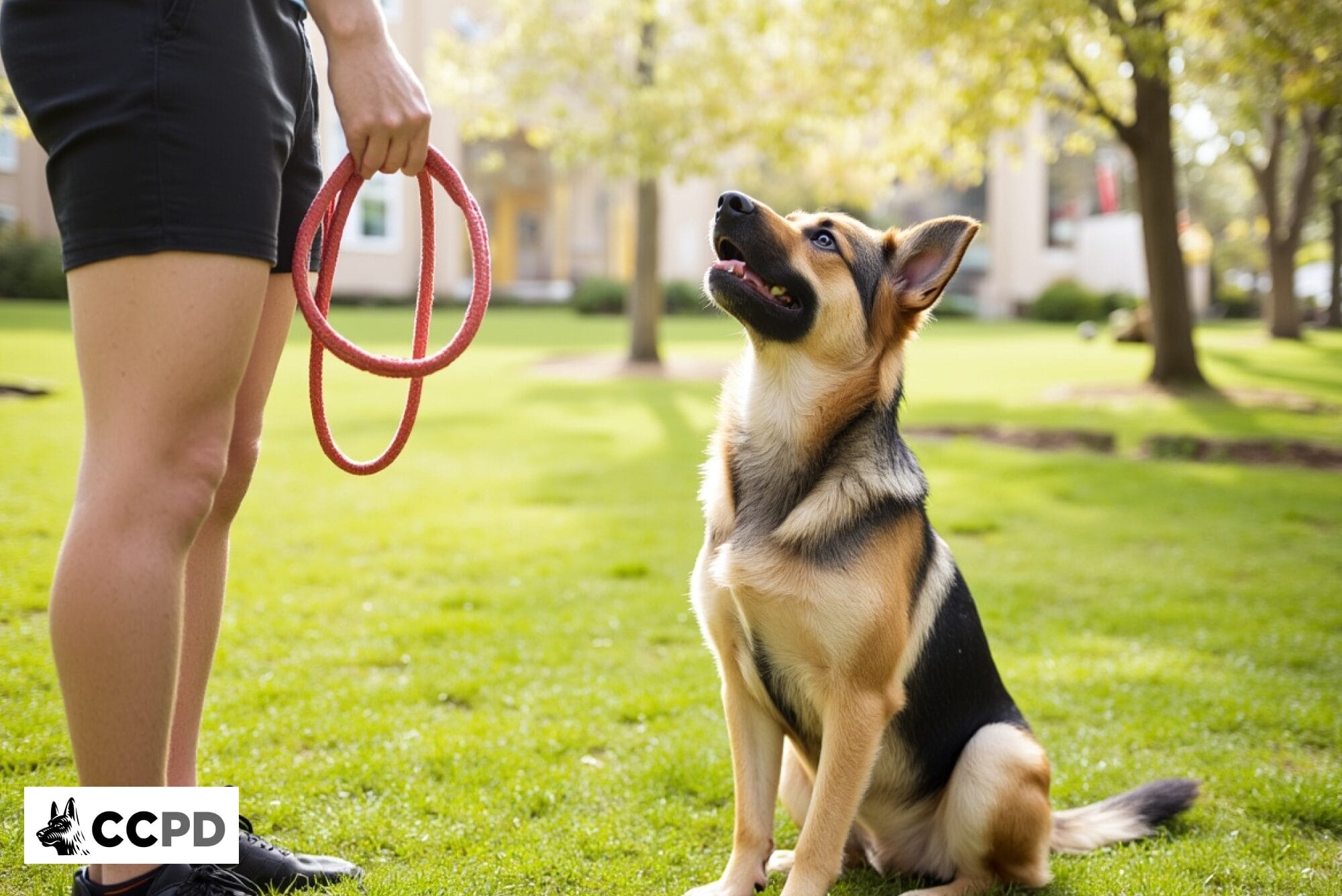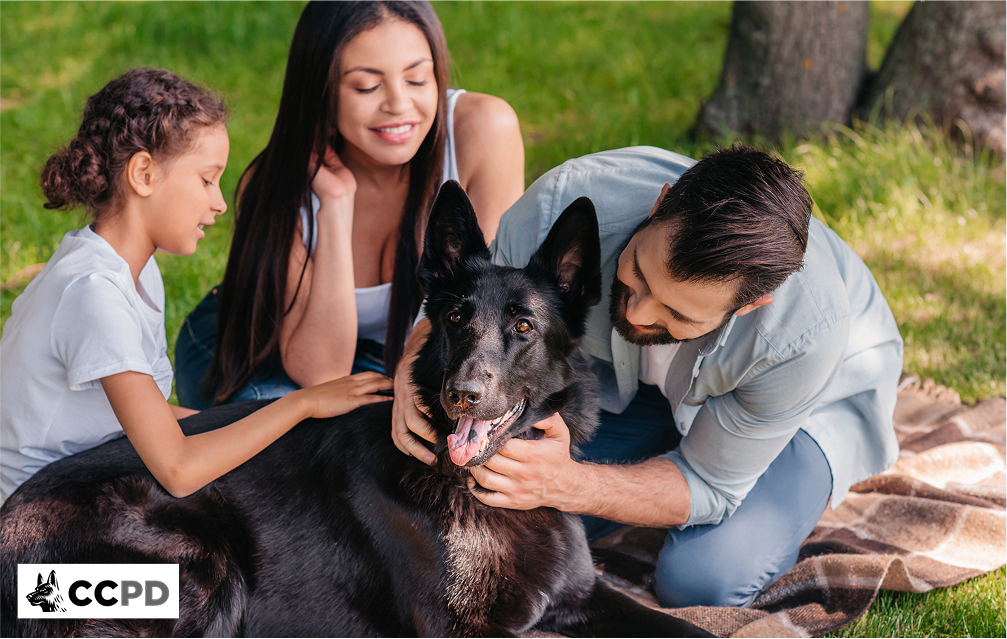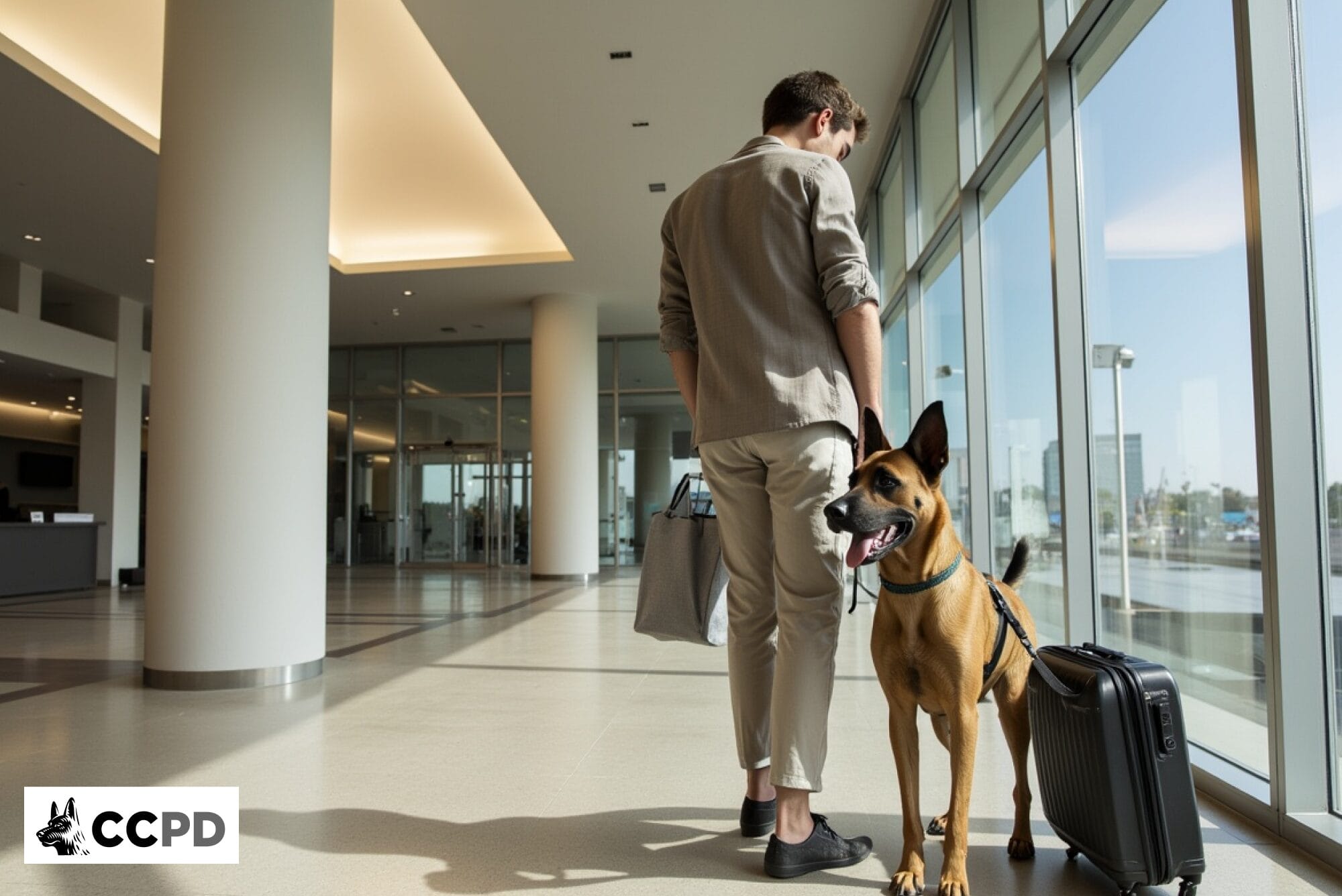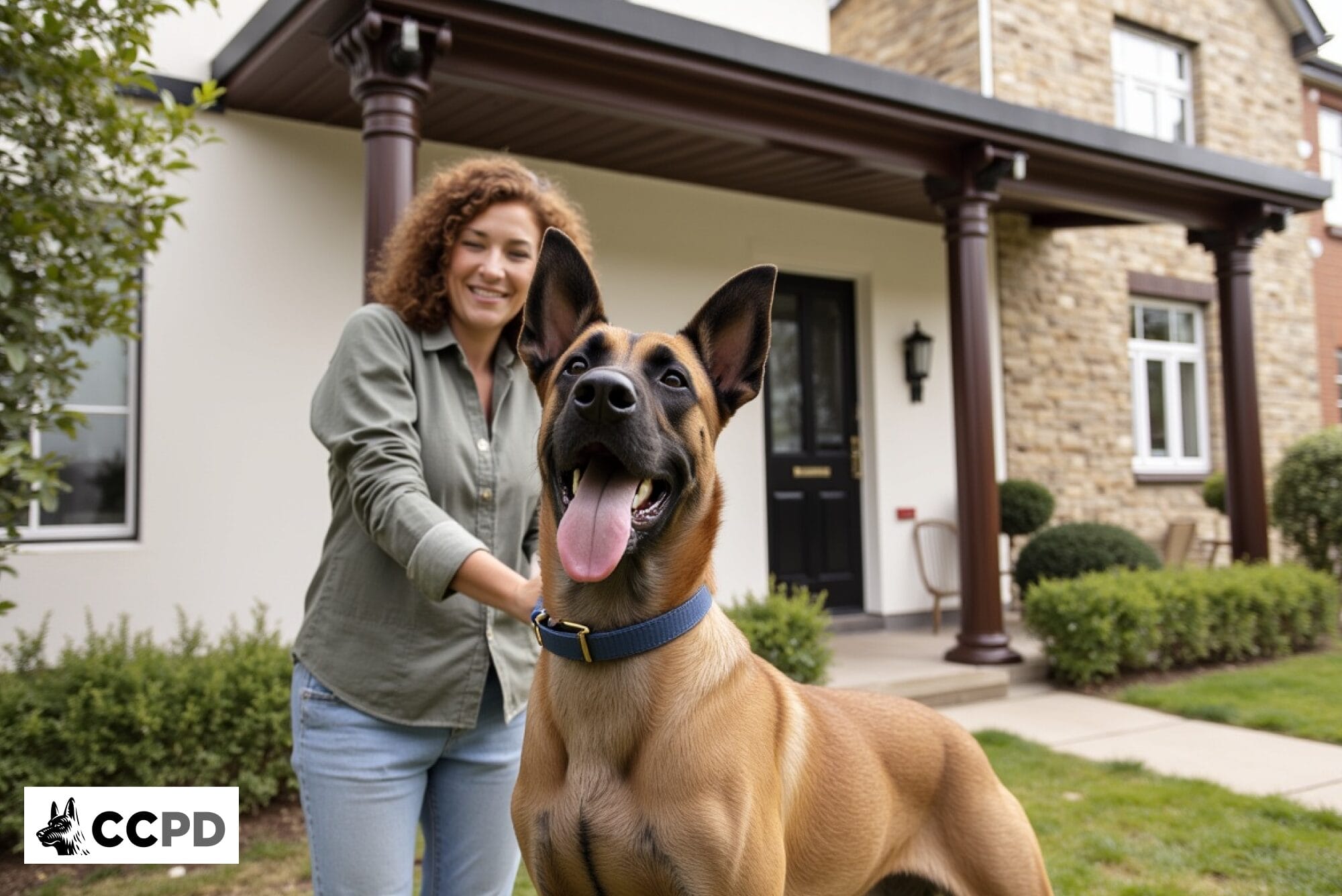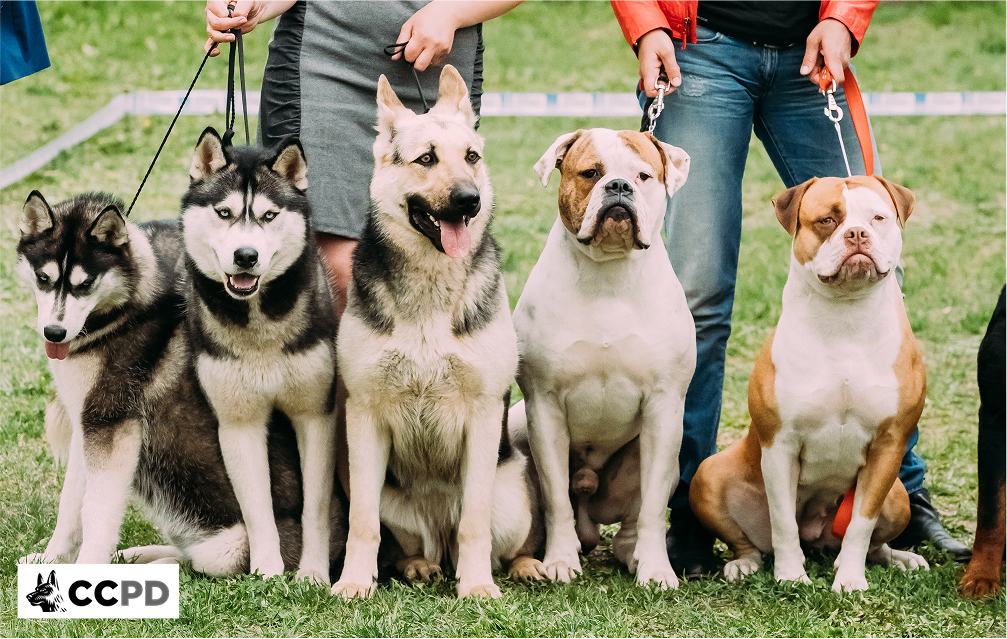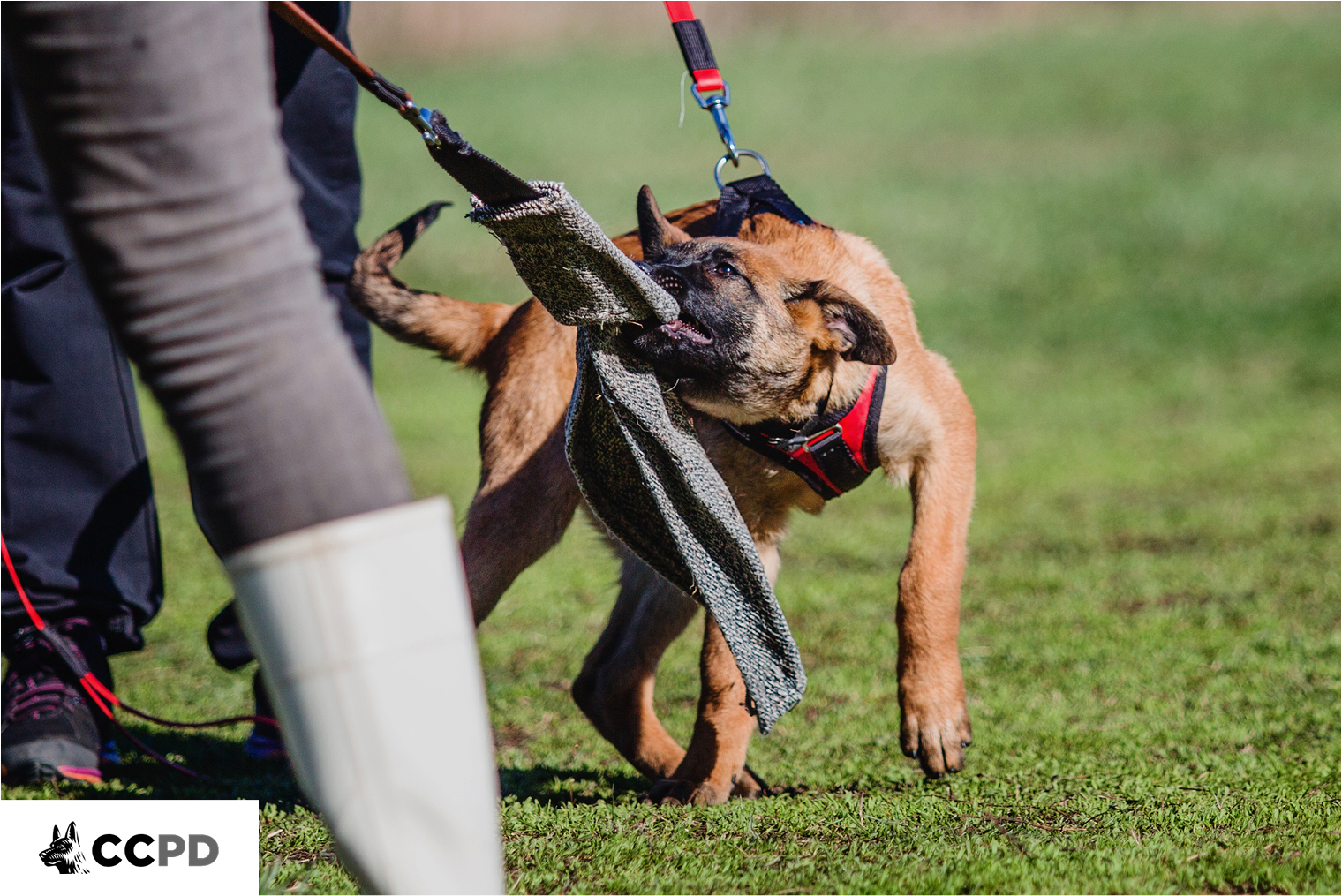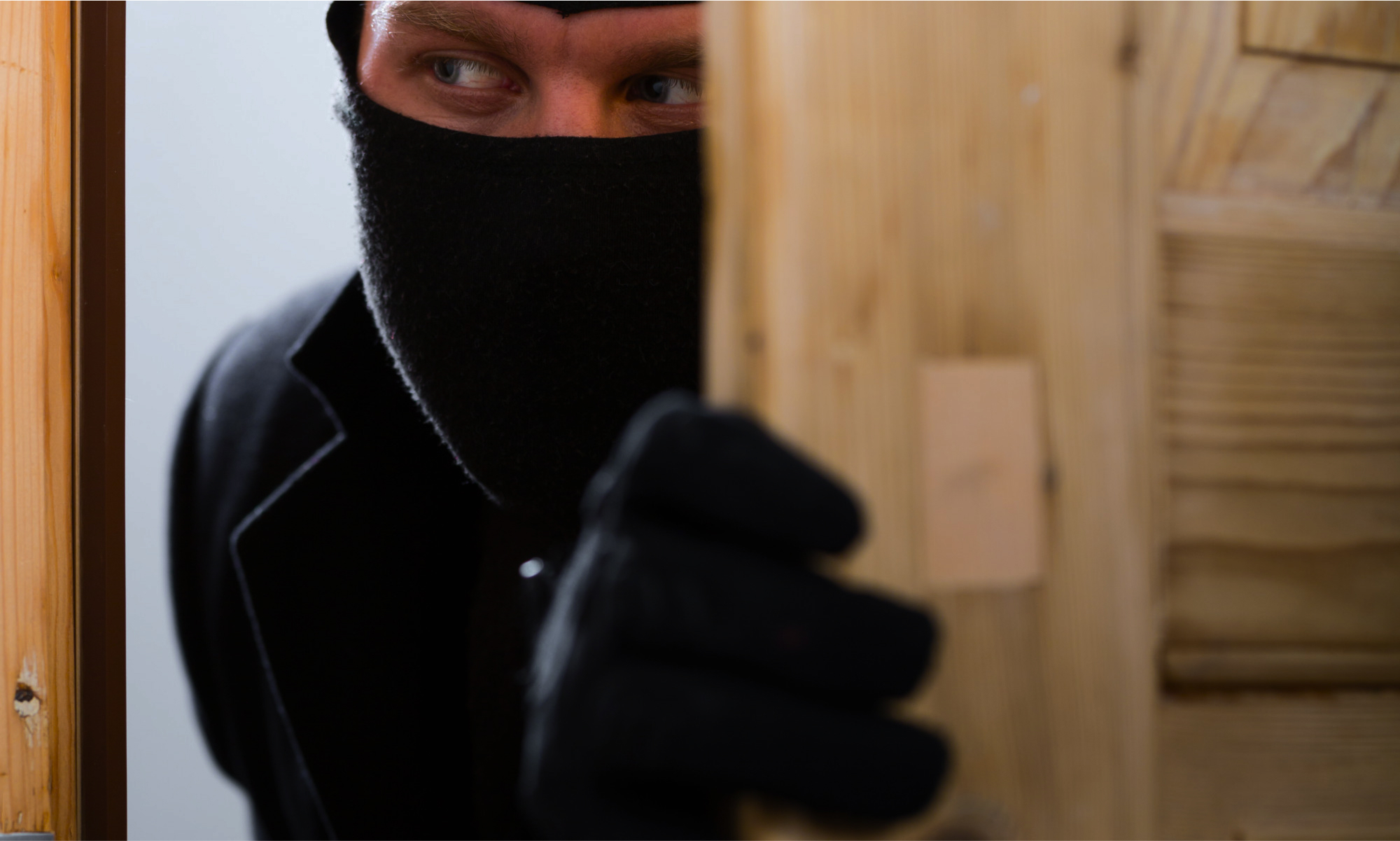It’s 2:17 AM. The subtle sound of breaking glass downstairs jolts you awake. Before you can reach for your phone, your German Shepherd is already alert, positioned between your bedroom door and your sleeping family. This isn’t just any family pet—this is a trained protection dog doing exactly what it was bred and trained to do: protect what matters most.
In today’s increasingly unpredictable world, more families are turning to personal protection dogs as a living, loving security system that offers what no alarm or camera ever could—intelligent, immediate intervention against potential threats. But not all protection dog breeds are created equal, and finding the right protection dog for your family requires understanding the unique blend of instinct, training, and temperament that makes a dog not just a deterrent, but a reliable guardian in a dangerous situation.
The clock is ticking on making your home truly secure. Let’s dive into everything you need to know about the best personal protection dogs and how they could transform your family’s safety starting today.
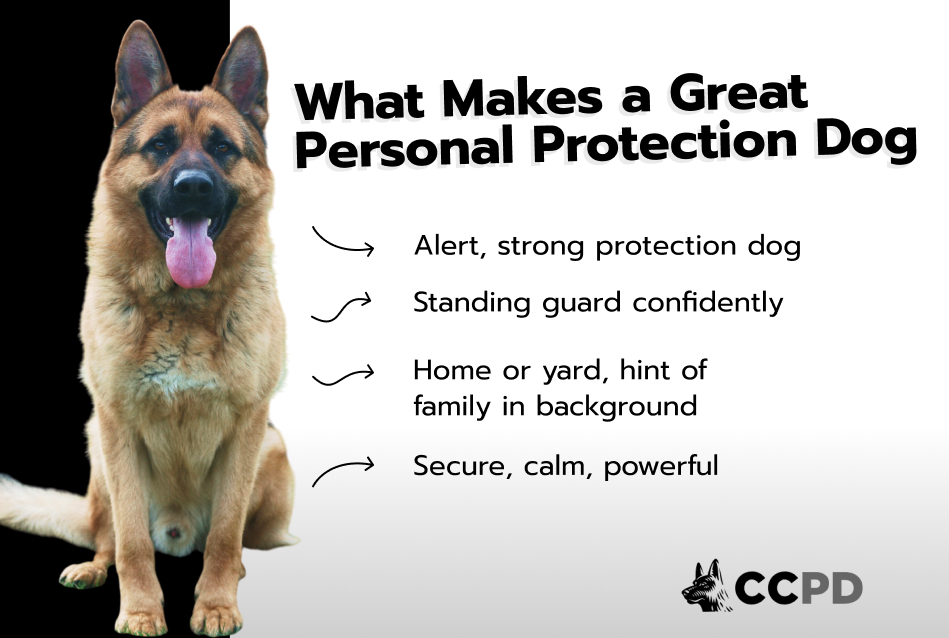
What Makes a Great Personal Protection Dog
The difference between a regular family pet and a true protection dog lies in a carefully balanced combination of natural instinct and specialized training. The best personal protection dogs possess a natural protective nature that’s been carefully honed—not a fearful aggression that can be unpredictable, but a confident awareness and willingness to act when there’s a real threat.
Physically, excellent guard dogs typically feature strong work ethics, powerful builds, and impressive intelligence. They need the physical capability to intervene if necessary, with strong jaws and athletic bodies that can move quickly and confidently. But physical attributes are only part of the equation.
What truly sets apart the best protection dogs is their discernment—the ability to distinguish between everyday occurrences and genuine dangers. This comes from both inherent temperament and proper training that builds upon their natural instincts.
The urgency of finding this balance cannot be overstated. Too aggressive, and you have a liability; too passive, and you lack true protection. This is why working with experts who understand the nuances of protection dog training is absolutely essential for your family’s safety.
Top Protection Dog Breeds for Personal Protection
When considering the best personal protection dogs, certain breeds consistently prove themselves elite in their protective capabilities.
Here’s a breakdown of the top contenders:
Tier 1: Elite Protection Specialists
-
- German Shepherd: The gold standard in protection work, combining intelligence, trainability, and natural protective instincts. German Shepherd puppies should begin early socialization and training to develop into balanced adult protectors.
-
- Belgian Malinois: Favored by military units and police departments worldwide, the Malinois brings incredible drive, focus, and agility to protection scenarios.
-
- Dutch Shepherd: Often overlooked but extremely capable, Dutch Shepherds offer slightly more versatility in family settings while maintaining excellent protection capabilities.
These Tier 1 breeds require experienced handlers and substantial daily exercise and mental stimulation. They’re not for the casual dog owner, but for those committed to proper training, they offer unmatched protection capabilities.
Tier 2: Powerful Guardian Breeds
-
- Doberman Pinscher: Combining sleek athleticism with impressive intelligence, properly trained Dobermans are exceptional family protection dogs with strong bonds to their owners.
-
- Cane Corso: This powerful breed features an imposing physical appearance with natural guarding tendencies, making them effective deterrents even before any training begins.
-
- Bullmastiff: Originally bred to catch poachers, these gentle giants have a natural instinct to pin and hold rather than attack, making them somewhat safer around family while still being formidable protectors.
Tier 3: Versatile Family Protectors
The Giant Schnauzer combines high intelligence with a more manageable size than some protection breeds, making them adaptable to different environments while still providing excellent security. Their distinctive appearance and loud bark serve as initial deterrents, while their protective nature kicks in when truly needed.
Rhodesian Ridgebacks bring a unique combination of independence and family loyalty. Originally bred to hunt lions in Africa, they have the courage and physical capability to confront threats while typically maintaining excellent behavior around family members.
Great Danes, despite their reputation as gentle giants, can make surprisingly effective guard dogs due to their imposing size alone. With proper training focused on controlled protective responses, they can be both loving companions and serious deterrents.
Don’t wait until it’s too late to consider which breed might be right for your situation. Each day without proper protection is another day your family remains vulnerable.
Related Article: Why Celebrities Are Choosing Protection Dogs Over Security Guards
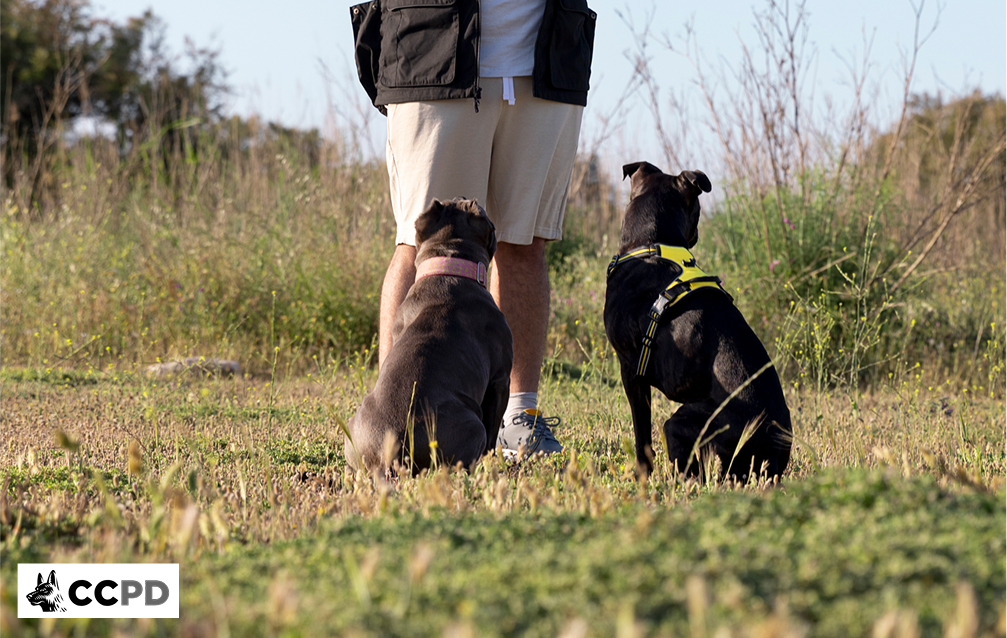
Training Considerations for Protection Dogs
The transformation from puppy to reliable guardian doesn’t happen by accident. Protection training is a comprehensive process that builds upon a dog’s natural instincts while adding controlled responses to specific situations.
Professional training is virtually non-negotiable for true protection dogs. While basic obedience can be taught at home, the nuanced work of protection training requires expert guidance to ensure your dog responds appropriately in high-stress scenarios. Quality training programs typically involve:
-
- Thorough assessment of the dog’s natural temperament and drives
-
- Foundation obedience with extraordinary reliability in all situations
-
- Controlled exposure to various stimuli and scenarios
-
- Gradual introduction to protection concepts with careful boundaries
-
- Integration of family members into the training process
Early socialization is particularly critical. From a young age, future protection dogs need positive exposure to different people, environments, sounds, and situations. This ensures they develop the discernment to recognize truly threatening situations versus normal everyday occurrences.
We have revolutionized protection dog training, moving away from outdated force-based methods. Today’s best-trained protection dogs respond with confidence and clear understanding rather than fear, creating more reliable guardians.
If you’re considering adding a protection dog to your family, start researching qualified trainers immediately. The best trainers often have waiting lists, and every month without proper protection is time your family remains vulnerable.
Finding Your Perfect Match: Selecting the Right Protection Dog
Not every protection dog breed will suit every family situation. Finding your perfect match requires an honest assessment of several key factors:
-
- Lifestyle Compatibility
-
- Activity level of your household
-
- Time available for exercise and training
-
- Travel frequency and arrangements for the dog
-
- Urban, suburban, or rural living environment
-
- Lifestyle Compatibility
-
- Experience Level Assessment
-
- Previous dog ownership history
-
- Comfort with handling powerful breeds
-
- Willingness to maintain ongoing training
-
- Understanding of canine body language and behavior
-
- Experience Level Assessment
The wrong match can lead to frustration, inadequate protection, or even dangerous situations. Take the time now to honestly evaluate your family’s needs and capabilities before making this critical security decision.
For families with small children, extra consideration is required. Some protection breeds naturally do better with children, while others may require more careful management and training to ensure appropriate behavior around young family members.
Executive protection dogs—those trained to the highest levels of discernment and response—represent a significant investment but provide unparalleled security. For high-profile individuals or those with specific security concerns, these specially trained dogs offer protection capabilities that extend well beyond the average family protection dog.
Living with a Protection Dog
Bringing a protection dog into your home means embracing a new lifestyle that revolves around maintaining both their protective capabilities and their role as loving family pets. These are not “set and forget” security systems—they’re living beings requiring ongoing commitment. Underestimating just how much structure, training, and integration they truly require.
A proper daily routine includes substantial physical exercise to keep your dog physically fit for protection work. Most protection breeds need a minimum of 60-90 minutes of vigorous activity daily, regardless of weather or your personal schedule. Mental stimulation is equally important—protection dogs are typically among the smartest breeds and need regular cognitive challenges to prevent boredom and destructive behaviors.
Building and maintaining a strong bond with your protection dog isn’t just about affection—it’s about security. These dogs must recognize your family as their pack, worthy of their ultimate protection. Daily training reinforcement, even just 10-15 minutes, helps maintain their skills and your position as leader.
Responsible dog ownership takes on additional meaning with protection breeds. You must be vigilant about secure containment, proper socialization in public settings, and maintaining control in all situations. The consequences of irresponsibility with these powerful animals can be serious.
The time to start preparing for this lifestyle change is now, not after bringing home your new guardian. Every aspect of your home environment should be evaluated with your future protection dog in mind.
Your Decision Matters Now
The decision to bring a trained protection dog into your family isn’t one to take lightly—but neither is the decision to leave your loved ones without the unique protection these remarkable animals provide. Unlike mechanical security systems, protection dogs offer intelligent, adaptive response to threats that can make the difference between tragedy and safety in a critical moment.
Whether you ultimately choose the unmatched drive of a Belgian Malinois, the powerful presence of a Cane Corso, or the versatile protection of a Giant Schnauzer, finding the right protection dog breed for your specific situation is a decision that deserves immediate attention and thorough research.
Don’t wait until you need protection to seek it out. The best personal protection dogs require time for selection, training, and bonding before they reach their full potential as family guardians. Start your journey toward enhanced family security today by connecting with Command Control Protection Dogs. We can guide you through this life-changing decision.
Your family’s safety deserves nothing less than the best protection available—and that means partnering with the right dog, properly trained for the ultimate purpose: keeping you safe when it matters most.
